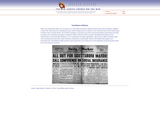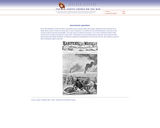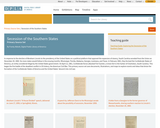School District of Marshfield Long Range Library Plan. Board Approved 4.14.22
The School District of Marshfield is located in Wood County.
Marshfield High School was constructed in 1968, with additions and remodeling done to the building in 1994 and 2006. The area (square feet) of the building is 297,985 with a designed capacity of 1,400 students. The high school features 79 classrooms, an auditorium (seating capacity 642), field house and auxiliary gymnasium (seating capacity 3,400), cafeteria (seating capacity 350), library (seating capacity 180), and multi-media room (seating capacity 205). The total acreage at the Senior High School is 60 acres.
Marshfield Middle School was constructed in 1939 with additions and remodeling in 1968, and again in 1993. There are 19.41 acres of land at the Middle School. The area (square feet) of the middle school is 115,740 with a designed capacity of 900 students. Facilities included 34 classrooms, two gymnasiums (combined seating capacity 1,200), and a multi-media center (seating capacity 284).
Grant Elementary School was constructed in 1992. Total square feet is 81,600 with a designed capacity of 850 students, which is the largest student capacity of all elementary schools in the School District of Marshfield. Grant Elementary features 33 classrooms, cafeteria/commons area (seating capacity 216), and a multi-purpose room/gym (seating capacity 900). Grant Elementary's land plot is 24.6 acres.
Lincoln Elementary was constructed in 1957, with additions and remodeling in 1968 and 2006. Additions and remodeling in 2006 transformed the school into an energy-efficient building. The area (square feet) is 43,108 with a designed student capacity of 500. The total acreage is 9 acres. Lincoln contains 25 classrooms and a multi-purpose room (seating capacity 600).
Madison Elementary School was constructed in 2006 and features a more energy-efficient building design. The total area (square feet) is 50,134 with a designed capacity of 500 students. The building contains 25 classrooms and a multi-purpose room (seating capacity 600). Madison Elementary sits on 17 acres of land.
Nasonville Elementary School was constructed in 2001. Total square feet of 40,205 with a designed capacity of 475 students. Nasonville features 19 classrooms and a multi-purpose room (seating capacity 600). The total acreage at Nasonville Elementary is 10 acres.
Washington Elementary School was constructed in 2006, and it also features an energy-efficient building design. The plot of Washington Elementary contains 11.43 acres of land. The school contains 25 classrooms and a multi-purpose room (seating capacity 600).



















